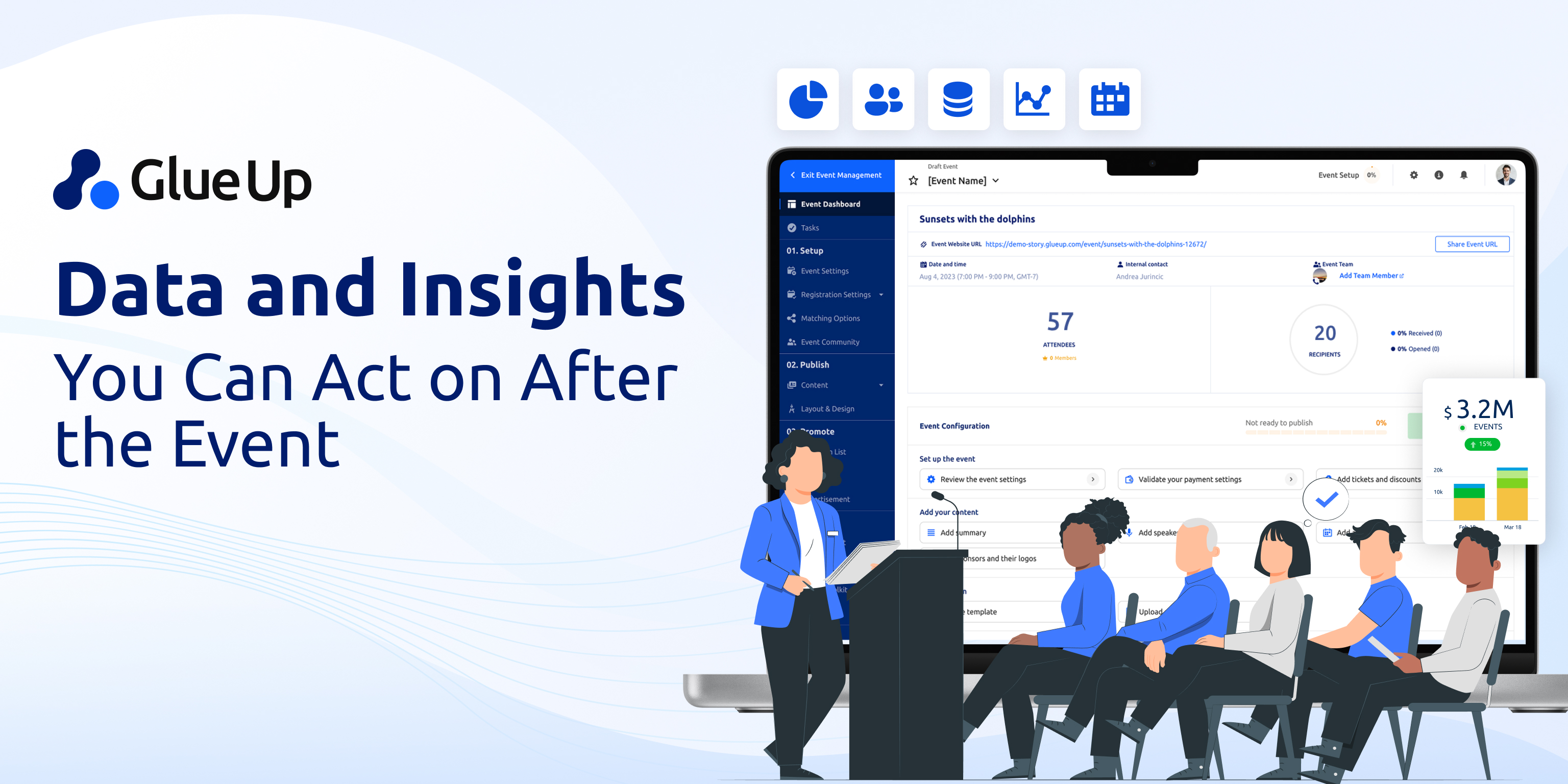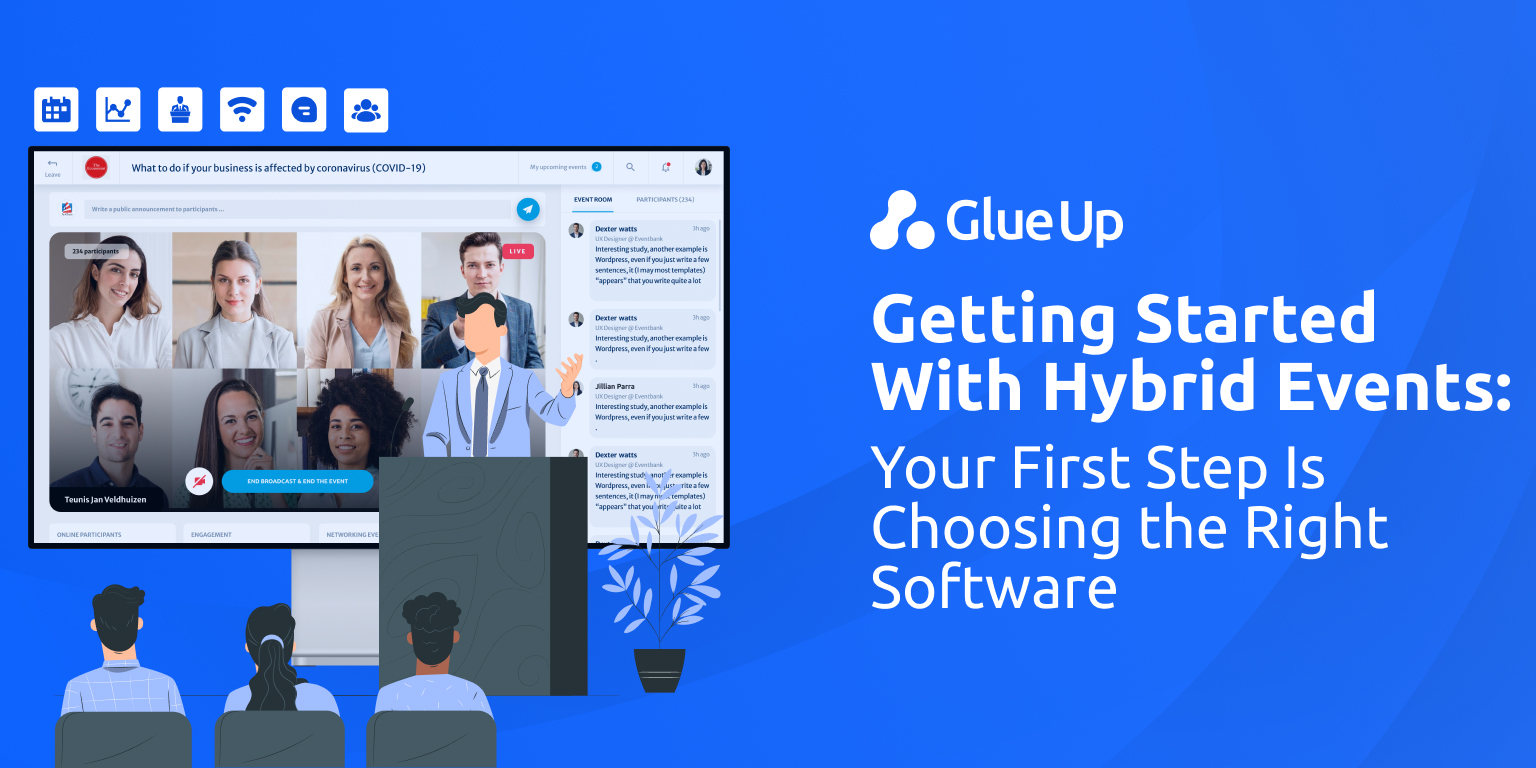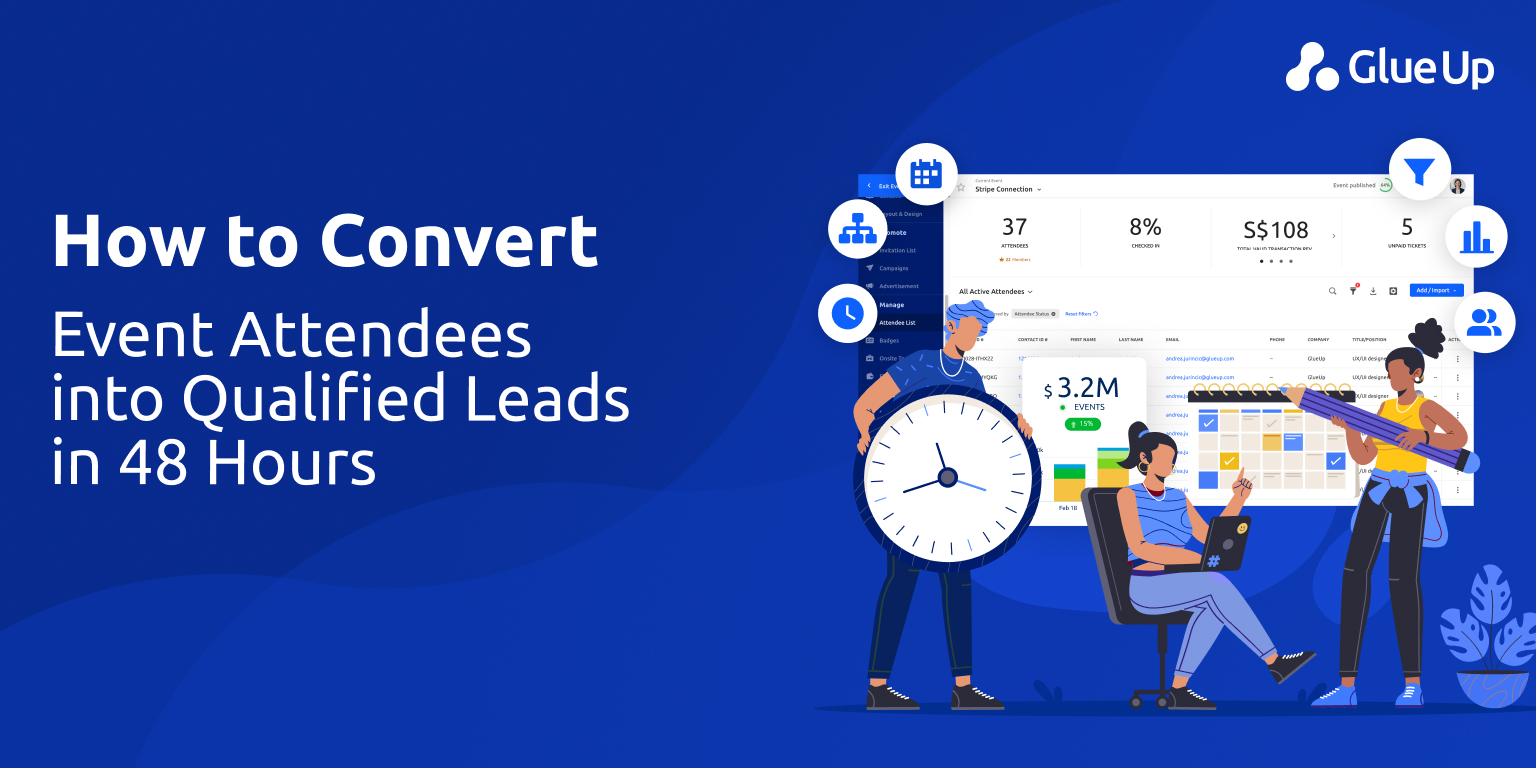
The room is empty. The banners are down. You’re staring at a coffee-stained notebook and a sponsor email that reads, “Can you send us the results by Monday?”
That’s the moment most teams realize they don’t have a real system for post event analytics. They’ve got badge scans, survey forms, and maybe a half-finished spreadsheet, but nothing that tells them which session actually mattered, whether networking worked, or how the event shifted renewals and sponsorship pipeline.
Boards, sponsors, and staff don’t want vanity recaps anymore. They want proof that events drive outcomes. And here’s the good news: the signals are already sitting in your data. When you use post event analytics in the right way, you can predict renewals, show sponsors real value, and decide what your next event should look like before the feedback emails even stop rolling in.
This blog is your guide to doing just that.
Key Takeaways
Attendance and revenue are lagging numbers. The true predictors are engagement and networking, how long people stayed in sessions, how many questions they asked, and whether they built new relationships.
With 51% of attendees saying successful networking drives return attendance, your post event analytics should measure meetings, messages, and booth interactions, not just session headcounts.
The highest engagement window is within 24–48 hours after the event. Thank-you emails, micro surveys, and segmented follow-ups during this period set the tone for renewals, sponsorships, and new joins.
Survey response rates of 20–30% are normal, on-site prompts can reach 85–95%, and Event NPS above +20 is a healthy sign. These benchmarks help boards and sponsors see your analytics as legitimate.
The best reports aren’t 40-slide decks of vanity numbers, they’re one-pagers showing leading indicators, renewal and revenue outcomes, and a clear plan for next year. When tied to systems like Glue Up, analytics turn directly into workflows and member actions.
Quick Reads
Why Leading Indicators Matter More Than Lagging Totals
Every association and chamber loves the big recap numbers: attendance totals, revenue, number of sessions. Those are lagging indicators. They tell you what happened but not what will happen.
The smarter play is to prioritize leading indicators: signs of participation and connection that predict outcomes like renewals, upgrades, or sponsorship sales.
Participation is the #1 leading indicator of event success, according to PCMA research. If members stayed in sessions, asked questions, and engaged in chats, they’re more likely to renew.
Networking is the driver for return attendance. Freeman’s 2025 data shows 51% of attendees cite successful networking as the reason they’ll come back. That means your post event analytics dashboard should feature meetings made and connections logged.
Glue Up makes these signals visible because participation and networking data aren’t siloed in separate apps, they’re tied to member profiles, invoices, and sponsor records in one system. That’s the difference between raw activity logs and analytics you can act on.
The Networking Chapter: Relationships Are the Metric
It’s tempting to measure networking with a smiley-face survey question like, “Did you meet someone valuable?” That’s too vague for a board deck.
Instead, post event analytics should track the volume and depth of relationships created:
How many 1:1 meetings were scheduled in your app?
How many messages were exchanged?
Which sponsors logged the highest booth dwell time or QR scans?
Did attendees who met at the event follow up within a week?
This is where Glue Up turns qualitative networking into quantitative insight. Every meeting booked, booth visit, or message exchanged is logged to a contact record. When you look at renewals three months later, you can see which kinds of networking behavior actually predict member retention.
That’s strategy fuel.
The 48-Hour Playbook for Post Event Analytics
Momentum dies fast. Wait a week, and inboxes bury your message under hundreds of unread emails. The most effective post event analytics strategies hinge on the first 48 hours.
Here’s what to do:
Send a thank-you within 24–48 hours. Include slides, recordings, and a one-question micro pulse: “Would you attend again?”
Segment instantly. Members, prospects, sponsors, and speakers should each get tailored next steps. Glue Up’s CRM does this automatically because every attendee is tagged at registration.
Route sponsor leads. Anyone who visited a booth, downloaded sponsor content, or booked a meeting should get passed to the right sponsor contact.
Log engagement behavior. Session dwell times, Q&A participation, and networking actions should already be feeding into your dashboard.
Why so fast? Studies show 24–48 hours are the window when attendees are most responsive to follow-ups. Any longer, and intent starts fading.
Week-One Benchmarks Your Board Will Accept
The next layer of post event analytics happens in the first seven days. This is where you gather data that proves outcomes but also sets realistic expectations.
Survey response rates. Post-event survey benchmarks hover around 20–30%. On-site prompts can spike this to 85–95%. If you hit 30%, you’re above industry average.
Event NPS. Net Promoter Score is useful if you interpret it correctly. In events, +20 is good, +50 excellent, +70+ exceptional. Compare against your own baseline year over year, not consumer brands.
Engagement segmentation. Which sessions had the highest dwell time? Which ones saw the most exits? What were the top three networking outcomes?
Glue Up’s survey module and analytics dashboard let you see these benchmarks in context. You can run a micro pulse inside the app before attendees leave the building, then match it against longer post-event surveys stored on their member record.
Sponsor Reporting That Wins Renewals
Sponsors don’t want “leads.” They want meaningful conversations. And post event analytics can prove you delivered.
Instead of dropping a CSV of badge scans, show them this:
Conversations logged. Not just booth visits, but how many people stopped to talk.
Meetings booked. Which attendees scheduled sponsor demos or follow-up calls?
Pipeline influence. How many deals entered the CRM with the sponsor tagged as the source?
Freeman’s research makes it clear: hands-on conversations beat raw lead counts when it comes to commercial outcomes. Glue Up ties booth visits and sponsor interactions to actual deals, letting you calculate “cost per qualified conversation.” That’s the metric that gets sponsors to renew.
The 30-Day Lens: From Analytics to Retention and Revenue
The most strategic post event analytics work happens after the initial buzz fades. Thirty days out, the question shifts from what happened to what changed.
This is when you measure:
Renewal lift. Compare renewal rates of attendees vs non-attendees. If event participants renew at a higher rate, you’ve got proof of retention impact.
Upgrades and joins. Did prospects convert into new members? Did members move up tiers?
Committee sign-ups. How many attendees raised their hand for volunteer or leadership roles?
Sponsor pipeline. Track which conversations turned into proposals or signed deals.
And don’t forget the content flywheel. The sessions that pulled the highest dwell time become gated guides, feeding your year-round marketing pipeline.
Building the One-Page Board Report
Every executive team wants numbers, but they don’t want a 40-page data dump. The art of post event analytics is boiling complexity into a one-pager that drives decisions.
Structure it like this:
Leading indicators: Participation, networking, session engagement, Event NPS.
Lagging outcomes: Renewals, revenue, sponsor pipeline.
Action plan: Three changes you’ll make next year (agenda, pricing, sponsor mix).
Glue Up’s dashboards make this straightforward. You can export snapshots of participation, NPS, and pipeline in one view, then annotate it with “what we’re changing next year.” That’s the kind of report a board actually reads.
Pitfalls to Avoid When Running Post Event Analytics
Most orgs get this wrong. They fall into predictable traps that kill credibility with sponsors and boards.
Vanity metrics. Totals without context. “We had 1,000 attendees” means nothing without per-capita engagement.
Survey tunnel vision. With 20–30% response rates, you’re hearing from the loudest voices, not the silent majority. Always weight survey results with behavioral data.
Late follow-ups. Waiting a week to send the first thank-you email is like letting warm leads freeze.
Cross-industry comparisons. Don’t compare your niche trade association’s NPS to Apple’s. Compare against yourself.
Data silos. Running analytics across five platforms means manual chasing. Glue Up avoids this by keeping CRM, events, surveys, and sponsor attribution in one ecosystem.
Future of Post Event Analytics: Where Associations Should Look Next
We’re entering an era where AI will shape post event analytics in ways associations are only beginning to explore. Early use cases:
Predictive renewal scores. AI can look at participation and networking data and flag members at high risk of churn.
Survey optimization. Machine learning can rewrite questions for clarity and higher response rates.
Sponsor heatmaps. AI can map foot traffic and digital clicks into reports that show sponsor ROI visually.
Glue Up is already building these capabilities into its AI Copilot, helping associations act on data faster without hiring a team of analysts.
Analytics as the Bridge to Action
Events without analytics are just expensive parties. You can’t prove value, you can’t defend budgets, and you can’t decide what to cut or double down on.
But with the right post event analytics, focused on participation, networking, survey benchmarks, NPS, and sponsor outcomes, you’re no longer guessing. You’re building a data-driven engine for renewals, sponsorship growth, and program evolution.
And when all of this lives inside a system like Glue Up, you have action. Every survey, scan, and session feed into workflows that nudge members to renew, prospects to join, and sponsors to buy again.
That’s the real measure of an event. Not what happened, but what changed after it ended.



